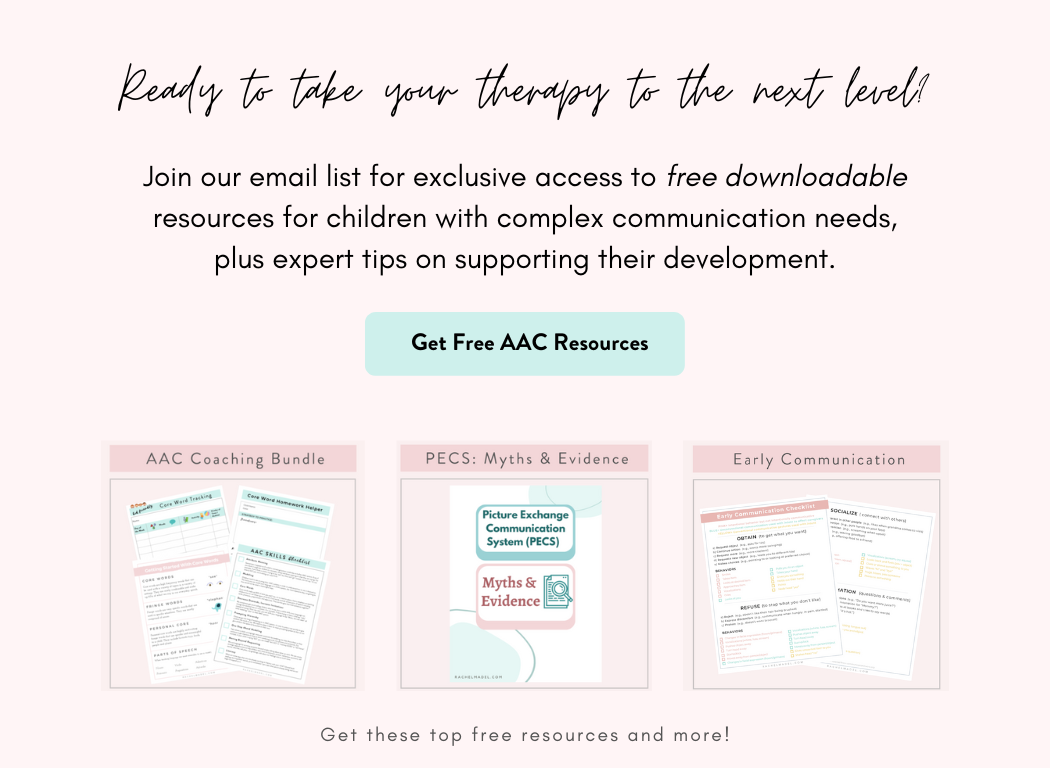Helping Children Communicate: Busting AAC Technology Myths
If you’re a parent with a child with complex communication needs, then you’re probably overwhelmed with all of the acronyms thrown around in the special needs community. After all, many speech therapists (myself included) have a number of acronyms at the end of their title.
The acronym I’m talking about today happens to be my favorite: AAC.
AAC stands for Augmentative and Alternative Communication, and I’ve already written a blog post explaining exactly what it is here.
Essentially, AAC refers to any kind of communication system, beyond spoken language, that helps children communicate. This includes communication options like sign language, pictures exchange (PECS), and visual supports like a printed communication board (you can download mine for FREE here, but also high-tech systems like an iPad loaded with apps to support communication.
But with communication systems like this, especially those involving technology, there are often common myths. So today we’re busting the most frequent AAC myth:
“If my child starts using AAC, then they won’t ever learn how to talk.”
This is a concern of many parents and teachers who are afraid that AAC will discourage spoken communication. However, there’s absolutely no research proving that kids stop talking when you give them AAC. In fact, I find that once kids start using a device it actually encourages more verbal communication.
Let me give you an example…
I began working with a three-year-old boy named John because his mom was concerned that he wasn't talking. I tried getting him to imitate words but he was having a difficult time. So I told mom that we should start using pictures to help him start communicating.
Initially, she was really nervous because she thought that using pictures would prevent him from talking. Yet after just a few weeks of using pictures to help John ask for his favorite toys, he started becoming a lot more vocal during our sessions. One day, we were playing outside and out of nowhere he gave me a picture of a ball and said “buh.” And this my friends, was John’s first word!
Fast-forward six months later and we completely stopped using pictures because John started talking so much that we didn't even need them anymore.
In my experience, children choose the path of least resistance. At first, it was easier for John to use pictures, but this shifted as talking became easier for him. That's why I always incorporate different modalities of communication until we figure out what works best.
While this is one of the most common AAC myths, I bust a few more of these myths in my free video series, “Communication Crash Course” for autism parents. This 4-part video series teaches communication strategies that parents can start implementing to help get their child with complex communication needs talking.
If you’re an SLP and you want to learn more about AAC Myths you can access the free video on my YouTube Channel.
OVER TO YOU….
Have you tried AAC for your minimally verbal child? I would love to know what has worked (and what hasn’t!) in the comments below!


